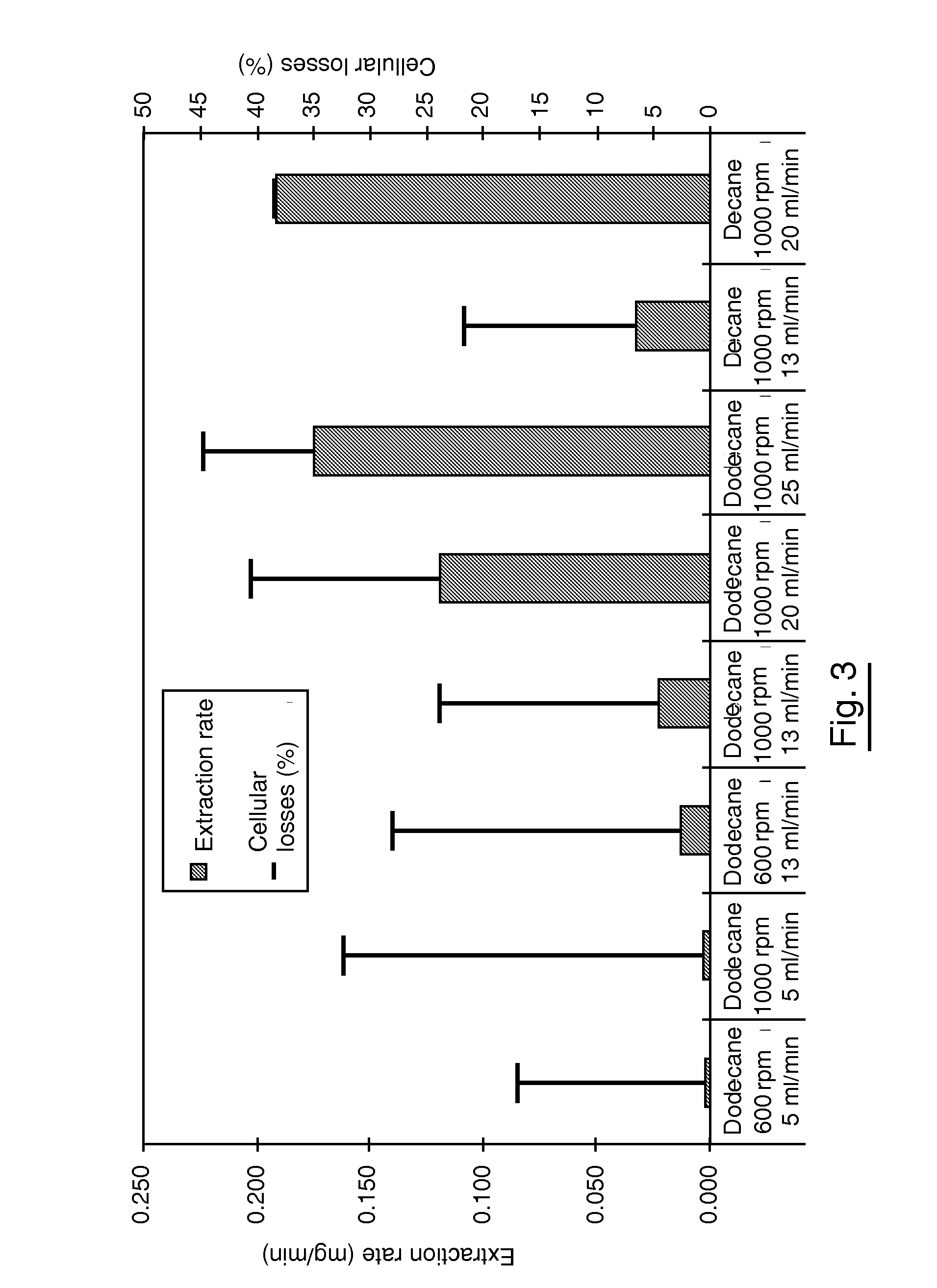Method for the intensive extraction of cellular compounds from micro-organisms by continuous culture and extraction, and corresponding device
a technology of cellular compounds and extraction methods, which is applied in the field of methods for the extraction of cellular compounds, can solve the problems of cellular disintegration, low growth rate of photosynthetic microorganisms, and inability to recover from culture damage, so as to prevent chemical damage to the microorganisms
- Summary
- Abstract
- Description
- Claims
- Application Information
AI Technical Summary
Benefits of technology
Problems solved by technology
Method used
Image
Examples
Embodiment Construction
[0057]As specified above, the principle of an embodiment of the invention lies in the provision of a method for the production-extraction of cellular compounds based on the association of two subsystems operating in a loop, each being specifically dedicated to either of the production or extraction phases.
[0058]A device for the implementation of a method according to an embodiment of the invention is described with reference to FIG. 2.
[0059]Such a device comprises:[0060]a culture vessel (such as a photobioreactor) 3 operating in continuous mode carrying out the photosynthetic micro-organism culture step;[0061]an extractor 4 carrying out continuous extraction of the cellular compounds;[0062]means 5 for transferring the micro-organisms from the photobioreactor into the extractor 4;[0063]means 41 for recovering the cellular compounds;[0064]means 6 for recirculating the micro-organisms from the extractor 4 into the photobioreactor 3.
[0065]The biosynthesis phase is thus carried out in on...
PUM
| Property | Measurement | Unit |
|---|---|---|
| biocompatibility | aaaaa | aaaaa |
| biocompatible | aaaaa | aaaaa |
| metabolic flexibility | aaaaa | aaaaa |
Abstract
Description
Claims
Application Information
 Login to View More
Login to View More - R&D
- Intellectual Property
- Life Sciences
- Materials
- Tech Scout
- Unparalleled Data Quality
- Higher Quality Content
- 60% Fewer Hallucinations
Browse by: Latest US Patents, China's latest patents, Technical Efficacy Thesaurus, Application Domain, Technology Topic, Popular Technical Reports.
© 2025 PatSnap. All rights reserved.Legal|Privacy policy|Modern Slavery Act Transparency Statement|Sitemap|About US| Contact US: help@patsnap.com


